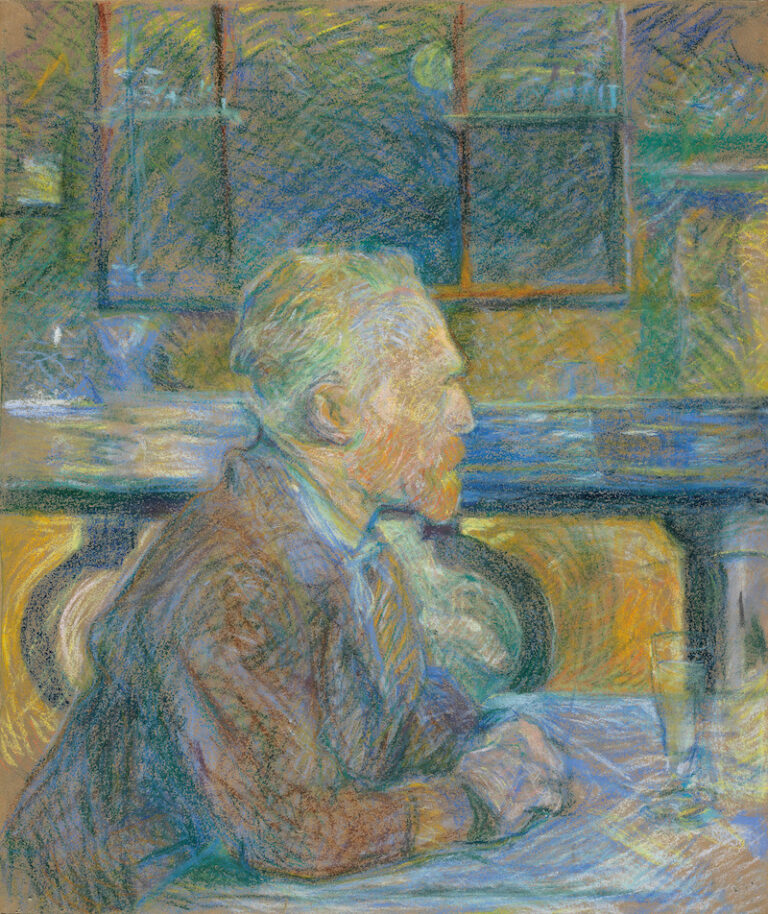Vincent Van Gogh had arrived in Paris in late February 1886. He was writing to Horace Mann Livens, a young English painter he’d met at the Academy in Antwerp while practicing on gypsum casts of ancient sculptures. The letter, which sold at auction in 1995 and is in a private collection, is a rare testament to Vincent’s time in Paris: only ten letters document the two years he spent there.
In this first letter, Vincent talked about his new landscape studies, “frankly green, frankly blue.” He said that since life is found in color, “true drawing is modeling with color.” He reiterated his respect for all-stars like Delacroix and mentioned artists he’d never heard of before—peers or people not much older than himself. In Antwerp, he hadn’t known about the impressionists. Now, he told his friend that he wasn’t “one of the club” but that he admired Degas’s nude figures and Monet’s landscapes. But Vincent hadn’t moved to Paris to join the impressionists.
His three months in Antwerp had been miserable, economically and physically. He’d failed to work with live models or find women who would pose naked, so he’d settled for gypsum casts—a common practice in the academies. He also used casts while working at home in Paris. He owned a few small casts of ancient Venus figurines, which led to sketches, drawings, and eventually to sublime still lifes—like Still Life with Plaster Statuette, a Rose and Two Novels and Plaster Cast of a Woman’s Torso. These seem to have predated some of Cézanne’s similar experiments, such as his L’Amour en Plâtre (1895), now at the Courtauld in London. The tradition of inserting casts or statuettes into larger paintings has been alive and well since the Renaissance. It took on new life after Vincent’s experiments, and then, after Cézanne’s practice, with artists like Matisse and Picasso at the beginning of the twentieth century. (Read more.)
What Child is This?
1 week ago


















No comments:
Post a Comment